This pub takes its name from a nearby former coaching inn.
Prints and text about God’s Port.
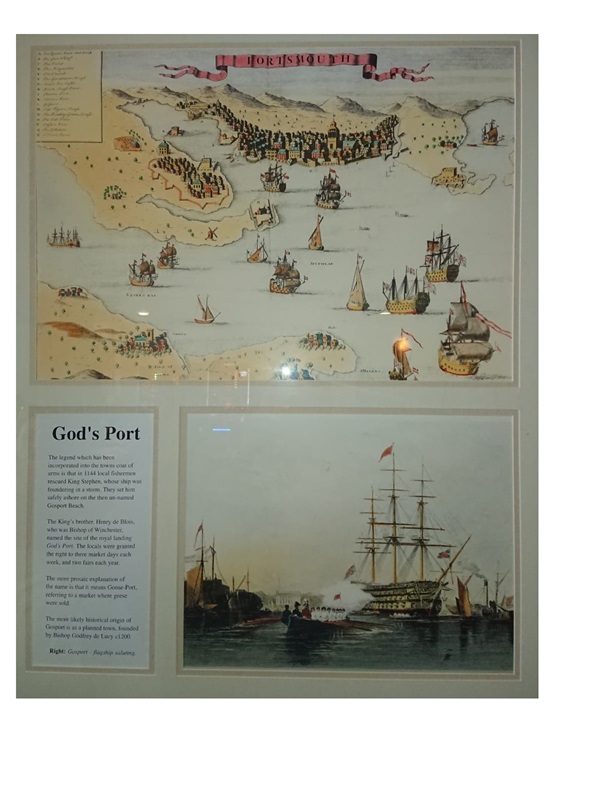
The text reads: The legend which has been incorporated into the towns coat of arms is that in 1144 local fishermen rescued King Stephen, whose ship was foundering in a storm. They set him safely ashore on the ten un-named Gosport beach.
The King’s brother, Henry de Blois, who was Bishop of Winchester, named the site of the royal landing God’s Port. The locals were granted the right to three market days each week, and two fairs each year.
The more prosaic explanation of the name is that it means Goose-Port, referring to a market where geese were sold.
The more likely historical origin of Gosport is as a planned town, founded by Bishop Godfrey de Lucy c1200.
Right: Gosport – flagship saluting.
Illustrations and text about fortifications.
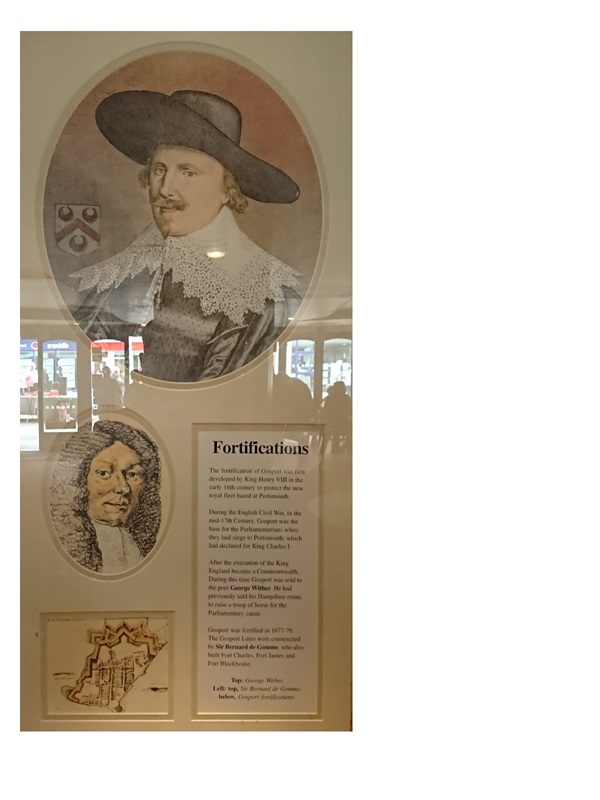
The text reads: The ‘fortification’ of Gosport was first developed by King Henry VIII in the early 16th century to protect the new royal fleet based at Portsmouth.
During the English Civil War, in the mid-17th Century, Gosport was the base for the Parliamentarians when they laid siege to Portsmouth, which had declared for King Charles I.
After the execution of the King, England became a Commonwealth. During this time Gosport was sold to the poet George Wither. He had previously sold his Hampshire estate to raise a troop of horse for the Parliamentary cause.
Gosport was fortified in 1677-78. The Gosport Lines were constructed by Sir Bernard de Gomme, who also built Fort Charles, Fort James and Fort Blockhouse.
Top: George Wither
Left: top, Sir Bernard de Gomme
Below: Gosport fortifications.
Photographs and text about Richard ‘Dickie’ Dawson.
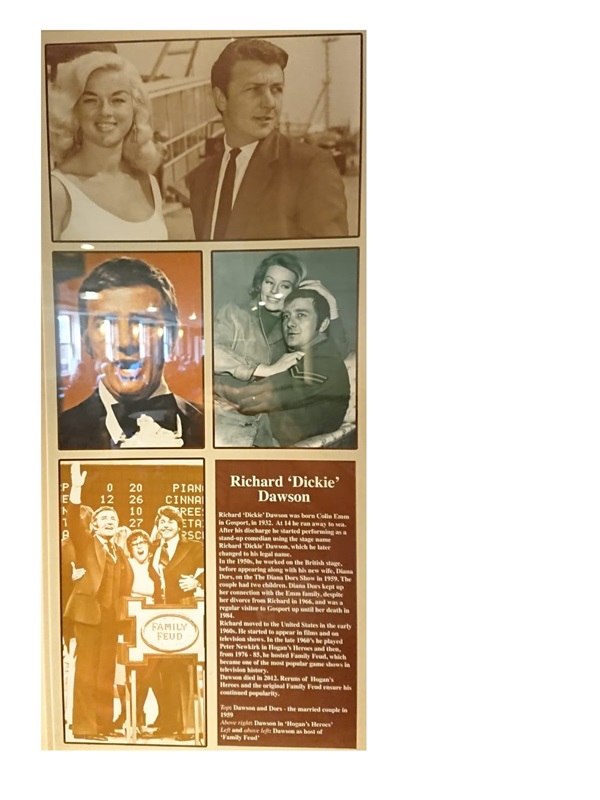
The text reads: Richard ‘Dickie’ Dawson was born Colin Emm in Gosport, in 1932. At 14 he ran away to sea. After his discharge he started performing as a stand-up comedian using the stage name Richard ‘Dickie’ Dawson, which he later changed to his legal name.
In the 1950s, he worked on the British stage, before appearing along with his new wife, Diana Dors, on the ‘The Diana Dors Show’ in 1959. The couple had two children. Diana Dors kept up her connection with the Emm family, despite her divorce from Richard in 1966, and was a regular visitor to Gosport up until her death in 1984.
Richard moved to the United States in the early 1960s. He started to appear in films and on television shows. In the late 1960s he played Peter Newkirk in Hogan’s Heroes and then, from 1976-85, he hosted Family Feud, which became one of the most popular game shows in television history.
Dawson died in 2012. Reruns of Hogan’s Heroes and the original Family Feud ensure his continued popularity.
Top: Dawson and Dors – the married couple in 1959
Above right: Dawson in ‘Hogan’s Heroes’
Left and above left: Dawson as host of ‘Family Feud’
Prints and text about trade and industry.
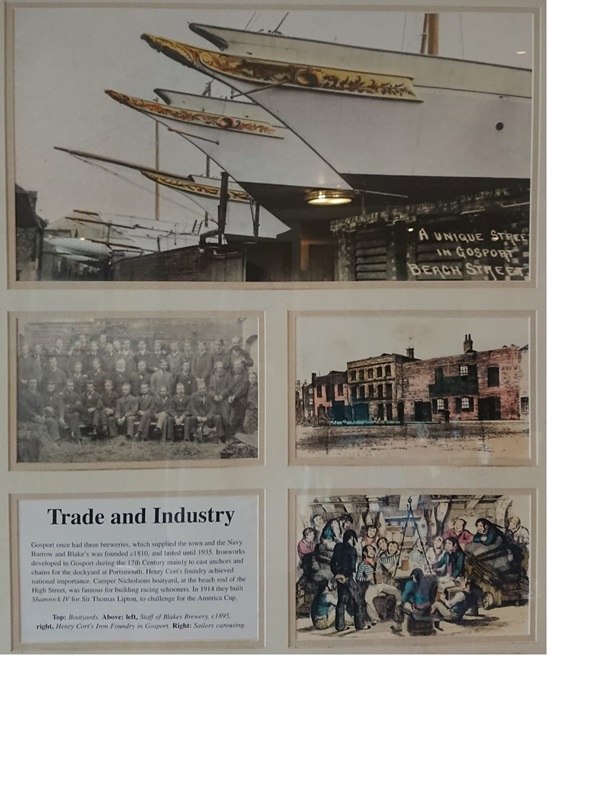
The text reads: Gosport once had three breweries, which supplied the town and the Navy. Barrow and Blake’s was founded c1810, and lasted until 1935. Ironworks developed in Gosport during the 17th century mainly to cast anchors and chains for the dockyard at Portsmouth. Henry Cort’s foundry achieved national importance. Camper Nicholsons boatyard, at the beach end of the High Street, was famous for building racing schooners. In 1914 they built Shamrock IV for Sir Thomas Lipton, to challenge for the American Cup.
Top: Boatyards
Above, left: Staff of Blakes Brewery, c1895
Right: Henry Cort’s Iron Foundry in Gosport
Right: Sailors carousing.
Illustrations and text about Henry Cort and Henry Clark.
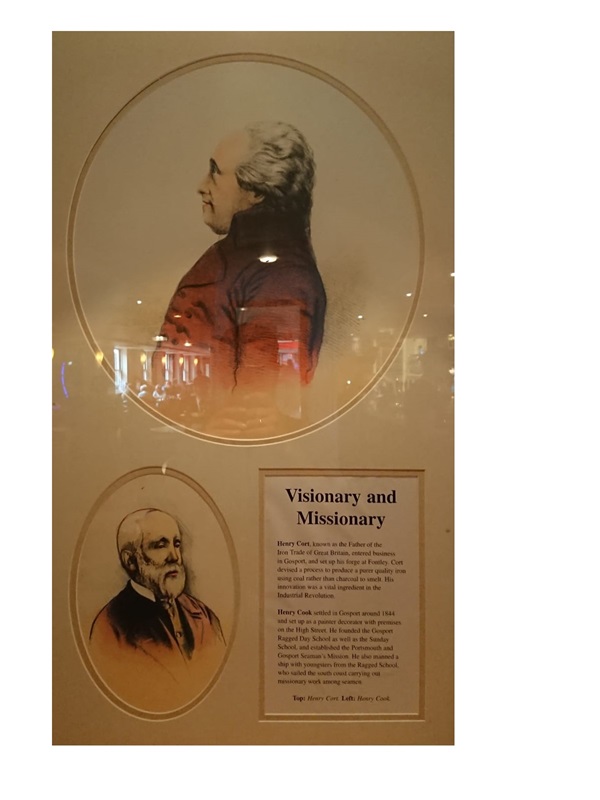
The text reads: Henry Cort, known as the Father of the Iron Trade of Great Britain, entered business in Gosport, and set up his forge at Fontley. Cort devised a process to produce a purer quality iron using coal rather than charcoal to smelt. His innovation was a vital ingredient in the Industrial Revolution
Henry Cook settled in Gosport around 1844 and set up as a painter decorator with premises on the High Street. He founded the Gosport Ragged Day School as well as the Sunday School, and established the Portsmouth and Gosport Seaman’s Mission. He also manned a ship with youngsters from the Ragged School, who sailed the south coast carrying out missionary work among seamen.
Top: Henry Cort
Left: Henry Cook.
Prints and text about Edward Hammond Hargraves.
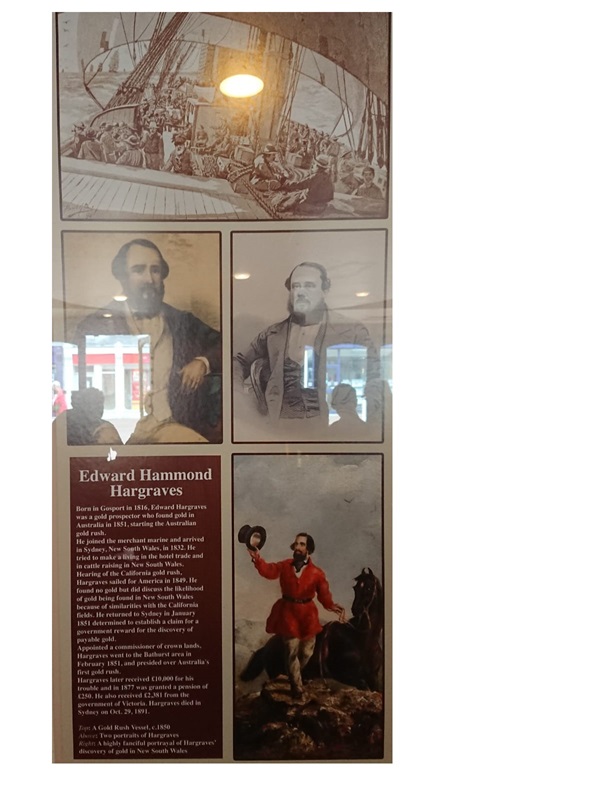
The text reads: Born in Gosport, in 1816, Edward Hargraves was a gold prospector who found gold in Australia in 1851, starting the Australian gold run.
He joined the merchant marine and arrived in Sydney, New South Wales, in 1832. He tried to make a living in the hotel trade and in cattle raising in New South Wales.
Hearing of the California gold rush.
Hargraves sailed for American in 1849. He found no gold but did discuss the likelihood of gold being found in New South Wales because of similarities with the California fields. He returned to Sydney in January 1851, determined to establish a claim for a government reward for the discovery of payable gold.
Appointed a commissioner of crown lands, Hargraves went to the Bathurst area in February 1851, and presided over Australia’s first gold rush.
Hargraves later received £10,000 for his trouble and in 1877 was granted a pension of £250. He also received £2,381 from the government of Victoria. Hargraves died in Sydney on October 29, 1891.
Top: A Gold Rush Vessel, c1850
Above: Two portraits of Hargraves
Right: A highly fanciful portrayal of Hargraves’ directory of gold in New South Wales.
Prints and text about military matters.
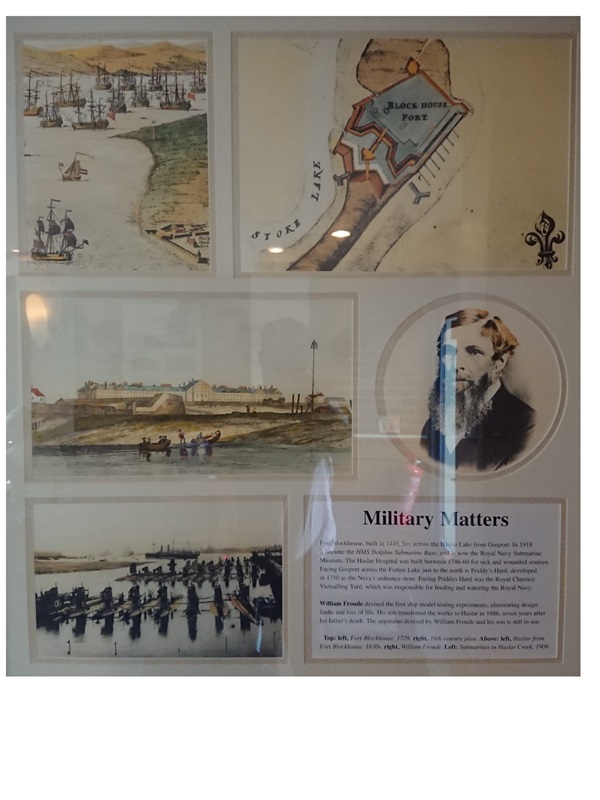
The text reads: Fort Blockhouse, built in 1440, lies across the Haslar Lake from Gosport. In 1918 it became the HMS Submarine Base, and is now the Royal Navy Submarine Museum. The Haslar Hospital was built between 1746-60 for sick and wounded seamen.
Facing Gosport across the Forton Lake just to the north is Priddy’s Hard, developed in 1750 as the Navy’s ordinance store. Facing Priddy’s Hard was the Royal Clarence Victualling Yard, which was responsible for feeding and watering the Royal Navy.
William Froude devised the first ship model testing experiments, eliminating design faults and loss of life. His son transferred the works to Haslar in 1886, seven years after his father’s death. The apparatus devised by William Froude and his son is still in use.
Top: left, Fort Blockhouse, 1729
Right: 18th century plan
Above, left: Haslar from Fort Blockhouse, 1830s
Right: William Froude
Left: Submarines in Haslar Creek, 1909.
External photograph of the building – main entrance.
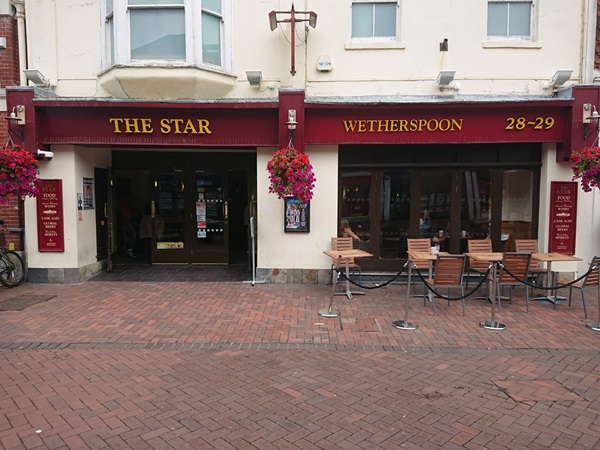
If you have information on the history of this pub, then we’d like you to share it with us. Please e-mail all information to: pubhistories@jdwetherspoon.co.uk